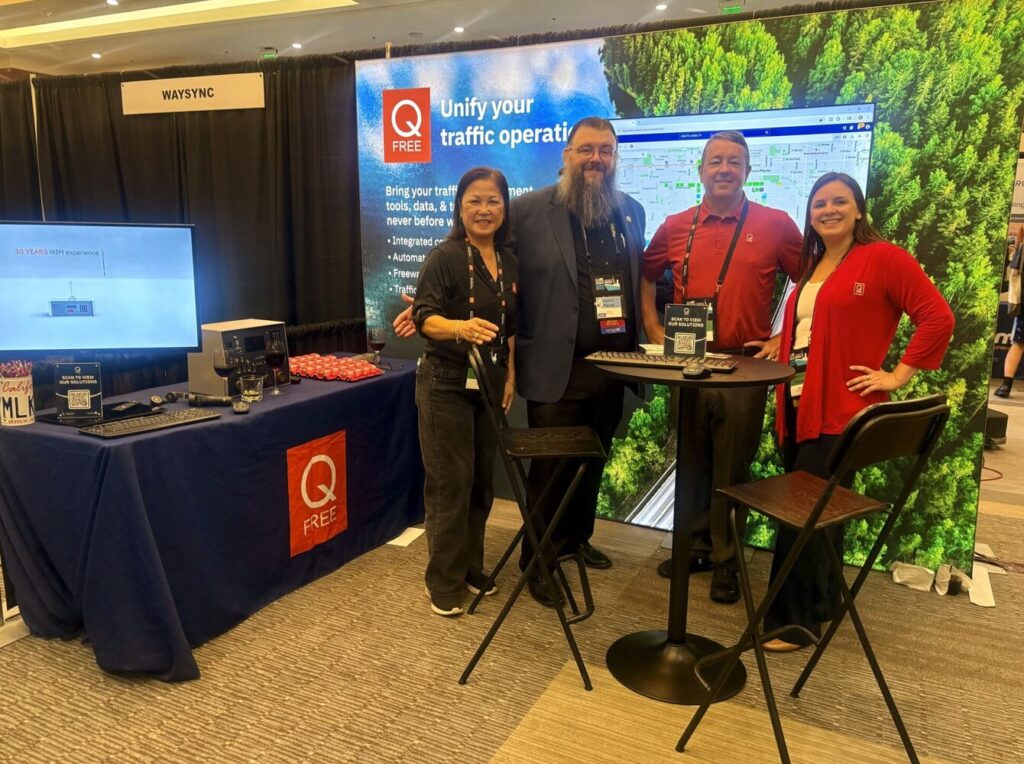

News
Innovation meets security: An interview with Q-Free’s VP of Product Management
Q-Free is raising the bar for cybersecure traffic management. In this exclusive Q&A, Pat Marnell, VP of Product Management, shares how years of on-the-ground experience shaped the launch of Dynamic Signals—Q-Free’s newest, most secure traffic signal control software—and explains why safeguarding critical infrastructure is central to our innovation strategy.
As cities become smarter and increasingly reliant on connected infrastructure, traffic management systems must keep pace—not only in terms of functionality but also in security. We sat down with Pat Marnell to talk about his journey, how the company approaches product development, and the launch of the company’s latest solution, Dynamic Signals, which sets a new standard for cybersecurity at the edge.

As a start, Pat, could you share a bit about your journey at Q-Free and how your experience has shaped your approach to product development?
It’s been an exciting journey, and I’ve had the opportunity to wear many hats at Q-Free, starting as a Sales Engineer, then moving into Project Management, and now serving as VP of Product Management. Before joining Q-Free, I worked as a transportation engineering consultant and researcher.
Each of those experiences taught me something unique about how our software is used in the real world. I try to carry all those “hats”—and even a few borrowed ones, like field technician, into the decisions I make about Q-Free’s products.
One of Q-Free’s guiding principles is customization through configuration. Traffic signal and ITS systems are complex, and no two users approach a challenge in the exact same way. By enabling customers to configure the software to meet their specific needs, we can maximize the user experience and create value for the widest range of users.
With all the years of experience and collaboration, what do you believe customers value most about Q-Free’s products?
There are many aspects of our products that provide value, but if I had to choose one that really sets us apart, it’s innovation. From my perspective, that’s what makes the biggest difference.
Our industry isn’t always the fastest to adopt new technology, but Q-Free has a genuine passion for pushing the boundaries in ITS. Many customers recognize that commitment, and they often respond with their own enthusiasm for what’s possible.

Why are quality and security so critical to customers, especially in the context of traffic management systems?
It may sound obvious, but it’s important to remember that Advanced Traffic Management Systems (ATMS) are critical infrastructure. Our stakeholders depend on their reliability. Deploying an ATMS is a significant effort and investment. If a system or feature isn’t reliable, it doesn’t matter how innovative it is—customers simply won’t value it.
When it comes to security, our customers don’t want to spend their days thinking about cyber threats—they want to focus on keeping people moving. Q-Free’s goal is to deliver platforms that satisfy IT departments’ rigorous requirements while allowing transportation engineers and technicians to concentrate on their real mission.
How does Q-Free ensure product development aligns with quality principles?
We have a rigorous regression testing process that combines the expertise of QA professionals and subject matter experts. On top of that, we’ve implemented a SOC2 framework of controls, we use automated scanning tools to catch vulnerabilities, and we consider security implications at every design stage.
Q-Free recently launched Dynamic Signals. Can you introduce this product and explain how it fits into Q-Free’s broader vision?
As traffic professionals we are always concerned about the safety of the public. We can simply no longer separate cybersecurity from safety.
Dynamic Signals builds on everything customers love about Q-Free’s MAXTIME software for traffic signal control and adds robust cybersecurity features.
For those interested in the technical details, Dynamic Signals uses an encrypted REST API with JSON Web Tokens (JWT) used for authentication and authorization. That’s basically what you would expect from any modern and secure web application. Dynamic Signals goes beyond existing industry standards while maintaining Q-Free’s commitment to open systems and interoperability.
Looking ahead, how do you see the role of security evolving in the next 5–10 years, and how is Q-Free preparing?
While I can’t predict the exact tactics threat actors will use, I can say with certainty that critical infrastructure will remain a target. Cybersecurity isn’t a one-time purchase—it’s more like a team of security guards constantly watching your back. That’s what Dynamic Signals delivers: a team of dedicated “signal nerds” who are passionate about keeping traffic systems safe, making life easier for our customers, and making life harder for the bad guys.